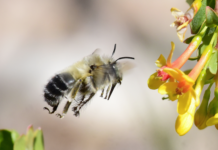
The first-ever Monarch Butterfly Summit was held in Washington, DC last week to identify priority actions to conserve the western monarch butterfly. At the two-day summit, leading experts provided the current state of the science, natural history, population status, habitats, and barriers to conservation success.
In the 1980s, more than 4.5 million monarchs overwintered along the California coast. Currently, the western overwintering population has declined by more than 95%. In 2020, western monarch numbers dropped to all-time lows when only 1,900 overwintering monarchs were observed. In 2021, however, monarch numbers appeared to be heading in the right direction when an estimated 250,000 monarchs overwintered in groves along the coast of California.
During the summit, Secretary of the Interior Deb Haaland and Senator Jeff Merkley announced steps the Interior Department will take to invest in monarch conservation:
- The Department will award $1 million to the National Fish and Wildlife Foundation’s (NFWF) Monarch Butterfly and Pollinators Conservation Fund. This public-private partnership program will focus on the western monarch butterfly by improving the availability of high-quality habitat; increasing the capacity needed to expand conservation efforts into the future; and supporting the implementation of technical assistance to engage private landowners with pollinator conservation practices on working lands. By leveraging the resources and expertise of partners, the program aims to help reverse recent population declines and ensure the survival of the monarch butterfly and other pollinators.

Two victims among hundreds from a coastal storm, in this case on the east coast. - The FWS will establish a Pollinator Conservation Center to address the decline of pollinators, including monarch butterflies. The Center, funded through annual appropriations, will support conservation decisions where they occur. Staff will not only work across all FWS programs and regions but also with other agencies and organizations as a hub for improving the state of science and the direct conservation actions that can reverse population trends.
There is no single cause for the extreme multi-decade drop in the western monarch butterfly overwintering population. Multiple factors have contributed including: habitat loss and degradation in overwintering groves and breeding areas; pesticides; and the effects of climate change—including drought, increased storm frequency and severity, and temperature extremes. As with many insects, monarch populations likely fluctuate in response to changes in temperature, precipitation, and other environmental factors.











![[VIDEO] Dickies®: Discover Workwear That’s Anything But Uniform](https://turfmagazine.com/wp-content/uploads/2023/06/1647663814-4b1a2a7742790a9b1e97a3b963477850192e1d6a9dfba9b07214a77bae25d6e3-d-218x150.jpg)





























![[VIDEO] Dickies®: Discover Workwear That’s Anything But Uniform](https://turfmagazine.com/wp-content/uploads/2023/06/1647663814-4b1a2a7742790a9b1e97a3b963477850192e1d6a9dfba9b07214a77bae25d6e3-d-324x160.jpg)